This article was co-authored by Luba Lee, FNP-BC, MS. Luba Lee, FNP-BC is a Board-Certified Family Nurse Practitioner (FNP) and educator in Tennessee with over a decade of clinical experience. Luba has certifications in Pediatric Advanced Life Support (PALS), Emergency Medicine, Advanced Cardiac Life Support (ACLS), Team Building, and Critical Care Nursing. She received her Master of Science in Nursing (MSN) from the University of Tennessee in 2006.
There are 10 references cited in this article, which can be found at the bottom of the page.
wikiHow marks an article as reader-approved once it receives enough positive feedback. In this case, 92% of readers who voted found the article helpful, earning it our reader-approved status.
This article has been viewed 298,663 times.
Packing a wound is the process of applying a packing material, usually sterile gauze, to a deep wound in order to absorb drainage and protect the area. This allows for faster healing from the inside out. An improperly packed wound may close and appear fine superficially, but won't heal inside, which makes it important to learn to properly dress and care for open wounds.
Steps
Initial Packing
-
1Assemble the necessary materials. If you’re caring for an open wound while it heals, you’ll need a large supply of the appropriate materials readily available. To change out the dressing once or twice a day, you’ll go through a lot of gauze and saline, so prepare accordingly and you won't have to make multiple runs to the store. You will need the following items:[1]
- Sterile wetting solution. You can get an over-the-counter or prescription cleansing solution from the drug store. You can also make your own by boiling 2 tsp. (12 g) of salt in 1 US quart (0.95 L) of water for 5 minutes.[2]
- For packing the wound, you'll need sterile or clean disposable gloves, clean towels, a clean bowl, and scissors or tweezers that have been sterilized in boiling water.
- For dressing the wound, you’ll need packing gauze, silicone sheets, bandages for the outer dressing, medical tape, and cotton swabs or Q-tips.
-
2Clean the area where you will set out your dressing supplies. Wounds need to be packed in a clean, sterile environment. If you’re working at home, dusty kitchen tables and TV trays are covered with germs that could cause infection. Wherever you plan on doing the dressing, wash and disinfect the surface thoroughly with disinfectant cleaner before you attempt to pack your wound.[3]
- Wash your hands thoroughly with soap and water to get started. Scrub up to the elbow on both hands, and keep your fingernails neat and trimmed.[4]
-
3Rinse the wound with saline solution. Before you start packing the wound, clean it thoroughly to remove blood, pus, crust, and contaminants. Rinse the area thoroughly with your cleansing solution. If there’s any crusting around the wound, use a piece of gauze dipped in cleansing solution to carefully dab it away. Work from the middle of the wound outwards so you don’t introduce bacteria from the surrounding area.[5]
- You can also gently clean away stubborn grime with a saline-soaked cotton swab.
- If your wound has any narrow spots or tunnels, take extra care to rinse those areas.
-
4Lay out the packing materials. After cleaning your work surface and getting ready to pack the wound, put a clean towel over the area.[6] Pour enough salt water or saline solution into a clean bowl to gently moisten the packing material. Open the outer dressing material (bandage and tape) as well, and place it on the towel. Keep it away from the bowl, and don’t get it wet.[7]
- Cut off a length of packing material and carefully wet it with the saline. Never soak packing materials in the packing solution, just dampen it slightly. If saline is dripping from the packing material, it’s too wet.[8]
- Many nurses and home dressers find it effective to cut pieces of tape to the desired length, then hang them on the edge of the table for later, so you won't have to work with digging at the tape roll when you want to be finishing the wound dressing. Organize your space however works best for you.
-
5Change your gloves if they got soiled. You can never be too careful with hand hygiene, especially if you're dealing with a deep and significant open wound. Infection can be deadly. Keep your hands clean using soap and water, then put on clean latex medical gloves for added protection.[9]
-
6Insert the packing material into the wound carefully. Squeeze the packing material to wring out any excess saline solution in the sterilized gauze. Use enough of the packing to fill the entire wound, but not so much that you have to jam it in tightly. Gently work the material into the wound, using a cotton swab to guide it in.[10]
- If there’s any gauze that doesn’t fit into the wound, gently pile it on top of the wound. Secure it in place with the outer dressing.
- Depending on the size and shape of the wound, getting the packing in may be very easy or it may take some negotiating. If you’re packing someone else’s wound, watch them closely and communicate to make sure you're not packing it too tightly or causing discomfort.
- In some cases, your doctor or nurse may recommend placing silicone sheets over the wound instead of packing material inside it. Discuss the best options for packing material with your care team.
-
7Dress the wound on the outside. Outer dressings should be made up of squares of gauze sponge, to cover the packed wound and seal everything up tightly and comfortably, protecting the packing from the outside. Layer sterile 4 in × 4 in (10 cm × 10 cm) gauze sponges over the wound, using enough to cover the entire site, with some extra around the outside for security.[11]
- Tape the outer dressing in place, at least 1–2 inches (2.5–5.1 cm) beyond the diameter of the wound’s edge, using the medical tape you hung off the corner of the table earlier. Always pick up the gauze by the edges, being careful not to over-handle it and risk infection.
Replacement
-
1Remove the outer dressing. Start by removing the tape of the outer dressing and gently pulling back the gauze sponge of the outer dressing.[12] Use one hand–clean and gloved–to hold the skin around the wound steady, and use the other hand to pull the outer dressing free.
- Be especially careful to look for any crusty blood or other seepage that may have formed and stuck to the dressing. Use a Q-tip moistened with saline to gently work the bandage off, if necessary. Go slowly and be extremely gentle.
- Put all discarded dressing materials into a plastic bag and dispose of them immediately, keeping them away from children and pets.[13]
-
2Remove the packing. Use your sterilized tweezers or your fingers to pinch the corner of the packing and start gently pulling it free of the wound.[14] Go extremely slowly and use caution. Stay focused on getting the packing free, keeping aware of any crust that has formed between the wound and the gauze. Use your Q-tip to work it loose if necessary. Pull the entire packing free and inspect the wound to make sure that no gauze is left in the wound.
-
3Apply pressure if bleeding starts. Depending on the severity and the depth of your wound, removing the packing may result in some bleeding, especially the first time you replace the packing. If this occurs, use a gauze sponge to apply direct pressure, pressing firmly and uniformly for at least 5 minutes to give time for a clot to form and stop the bleeding.[15] Move forward with the packing.
- If you cannot get the bleeding to stop, or the wound is still bleeding a day or two after getting your wound checked out by a doctor, return to the hospital immediately and get your wound checked out.
-
4Check the wound for signs of infection. After you've removed the packing, inspect the wound closely. Discoloration, excess seepage, or unpleasant odors are all signs of infection that should be addressed immediately by returning to the hospital and getting the necessary treatment. A doctor may need to administer antibiotics or alternative methods of dressing the wound.[16]
-
5Wash the area around the wound gently with soap and water. Use a clean sponge, warm water, and antibacterial soap to clean the skin around the wound. Don't soak the wound and don't get soap directly in deep wounds. Wash around the perimeter instead.[17]
- When you’re done, pat the area dry with a clean, soft towel.
-
6Rinse the wound with sterile saline. To wash the wound itself, use a clean piece of gauze soaked in saline solution. Move from the middle of the wound outwards to avoid introducing bacteria and other contaminants into the wound.[18]
-
7Replace the packing as directed. After removing the packing and cleaning the area, repack the wound immediately, as outlined in the first section, unless directed otherwise. Always follow your doctor’s instructions and change the dressing according to the recovery plan for your wound. Some wounds will need to be packed a few times a day, while others will require a different schedule.
Daily Care
-
1Change the dressing as often as your doctor recommends. Always follow your doctor’s instructions regarding the changing of an open wound. After the tissue begins to heal, most doctors will allow the wound to be changed out once a day, eventually dropping the packing entirely to allow the wound to begin healing more thoroughly. When enough tissue is built up, the external dressing should be enough to allow the wound to continue healing properly.[19]
- Most wounds shouldn’t need to be packed for more than 10 days. Always pay attention to symptoms and common sense–if it seems to be healing improperly or taking too long, call your doctor.
-
2Look for the warning signs of infection. While you're changing out the dressings, it's very important to keep a close watch for any of the following signs of infection. Call your doctor immediately if you or the patient experiences:[20]
- A body temperature over 101.5 °F (38.6 °C)
- Chills
- White, yellow, or black discoloration in the wound
- Foul-smelling drainage or fluid from the wound
- Increased redness or swelling of the wound or skin around it
- Increasing tenderness or pain in or around the wound
-
3Never soak the wound. While you're packing and caring for an open wound, it's critical to avoid soaking the wound or getting the area extremely wet. This can promote infection and keep the wound from healing properly. Let your body do the work of healing itself and avoid getting the wound wet.[21]
- You may shower, keeping the wound free of water, after the first 24 hours. Usually, you can wrap the area in plastic, or simply keep the wound outside the spray of the water to keep it safe. Your doctor may have more specific instructions regarding cleaning the wound.
- Don’t soak the area in a bathtub or go swimming until your doctor says it’s okay.
-
4Talk to your doctor about any questions or concerns. Caring for an open wound is serious business. If you have any hesitations or concerns about the healing process, call your doctor immediately. Don't wait and allow an infection to become more severe. Blood infections and gangrene can result from wounds looked after improperly.
Expert Q&A
-
QuestionIf packing is falling out of a wound, should it be removed? If it is left partially out and covered with a new bandage, is that okay for a day or two before a nurse comes to replace it?
 Luba Lee, FNP-BC, MSLuba Lee, FNP-BC is a Board-Certified Family Nurse Practitioner (FNP) and educator in Tennessee with over a decade of clinical experience. Luba has certifications in Pediatric Advanced Life Support (PALS), Emergency Medicine, Advanced Cardiac Life Support (ACLS), Team Building, and Critical Care Nursing. She received her Master of Science in Nursing (MSN) from the University of Tennessee in 2006.
Luba Lee, FNP-BC, MSLuba Lee, FNP-BC is a Board-Certified Family Nurse Practitioner (FNP) and educator in Tennessee with over a decade of clinical experience. Luba has certifications in Pediatric Advanced Life Support (PALS), Emergency Medicine, Advanced Cardiac Life Support (ACLS), Team Building, and Critical Care Nursing. She received her Master of Science in Nursing (MSN) from the University of Tennessee in 2006.
Board-Certified Family Nurse Practitioner Try to secure the dressing of the packed wound with a sterile bandage by going over it a couple of times. Keep the bandage pressure comfortable--not too tight nor too loose over the wound. If you cover and protect the wound in such a way, it should be ok until before a nurse sees you in a day or two.
Try to secure the dressing of the packed wound with a sterile bandage by going over it a couple of times. Keep the bandage pressure comfortable--not too tight nor too loose over the wound. If you cover and protect the wound in such a way, it should be ok until before a nurse sees you in a day or two. -
QuestionIs it okay to let the wound get air for a little while?
 Luba Lee, FNP-BC, MSLuba Lee, FNP-BC is a Board-Certified Family Nurse Practitioner (FNP) and educator in Tennessee with over a decade of clinical experience. Luba has certifications in Pediatric Advanced Life Support (PALS), Emergency Medicine, Advanced Cardiac Life Support (ACLS), Team Building, and Critical Care Nursing. She received her Master of Science in Nursing (MSN) from the University of Tennessee in 2006.
Luba Lee, FNP-BC, MSLuba Lee, FNP-BC is a Board-Certified Family Nurse Practitioner (FNP) and educator in Tennessee with over a decade of clinical experience. Luba has certifications in Pediatric Advanced Life Support (PALS), Emergency Medicine, Advanced Cardiac Life Support (ACLS), Team Building, and Critical Care Nursing. She received her Master of Science in Nursing (MSN) from the University of Tennessee in 2006.
Board-Certified Family Nurse Practitioner It is ok to let the wound get “aired out” during the time while you change the dressing. Otherwise, keeping the wound clean by cleansing and changing the dressing (as recommended by your provider), and keeping it covered with an ointment or packing material, with edges of the wound supported by a bandage, is the quickest way to heal. While some airing out (5-10 minutes while changing the dressing) of the wound is ok, excessive “airing out” might increase the risk of infection and impede healing.
It is ok to let the wound get “aired out” during the time while you change the dressing. Otherwise, keeping the wound clean by cleansing and changing the dressing (as recommended by your provider), and keeping it covered with an ointment or packing material, with edges of the wound supported by a bandage, is the quickest way to heal. While some airing out (5-10 minutes while changing the dressing) of the wound is ok, excessive “airing out” might increase the risk of infection and impede healing.
Things You'll Need
- Packing material
- Wetting solution
- Mild, unscented soap
- Clean medical gloves
- Scissors
- Clean bowl
- Clean towel
- Top dressing material, such as gauze squares
- Medical tape
- Cotton swabs or Q-tips
- A plastic bag for disposal of used supplies
Warning
- This article is not intended to replace medical advice. Listen to your physician's instructions regarding wound packing and follow them.
References
- ↑ https://myhealth.alberta.ca/Health/aftercareinformation/pages/conditions.aspx?hwid=acg8538
- ↑ https://intermountainhealthcare.org/ckr-ext/Dcmnt?ncid=520684503
- ↑ https://www.facs.org/~/media/files/education/patient%20ed/wound_surgical.ashx
- ↑ https://opentextbc.ca/clinicalskills/chapter/1-6-hand-hygiene/
- ↑ https://intermountainhealthcare.org/ckr-ext/Dcmnt?ncid=520684503
- ↑ https://myhealth.alberta.ca/Health/aftercareinformation/pages/conditions.aspx?hwid=acg8538
- ↑ https://opentextbc.ca/clinicalskills/chapter/4-5-complex-dressing-change/
- ↑ https://www.aast.org/resources-detail/discharge-instructions-wound-cares
- ↑ https://opentextbc.ca/clinicalskills/chapter/1-6-hand-hygiene/
- ↑ https://www.aast.org/resources-detail/discharge-instructions-wound-cares
- ↑ https://www.facs.org/~/media/files/education/patient%20ed/wound_surgical.ashx
- ↑ https://medlineplus.gov/ency/patientinstructions/000315.htm
- ↑ https://myhealth.alberta.ca/Health/aftercareinformation/pages/conditions.aspx?hwid=acg8538
- ↑ https://opentextbc.ca/clinicalskills/chapter/4-5-complex-dressing-change/
- ↑ https://www.aast.org/resources-detail/discharge-instructions-wound-cares
- ↑ https://advancedtissue.com/2015/08/6-signs-you-have-an-infected-wound/
- ↑ https://advancedtissue.com/2018/10/wound-cleaning-101-how-to-clean-wounds-for-proper-healing/
- ↑ https://intermountainhealthcare.org/ckr-ext/Dcmnt?ncid=520684503
- ↑ https://medlineplus.gov/ency/patientinstructions/000315.htm
- ↑ https://www.aast.org/resources-detail/discharge-instructions-wound-cares
- ↑ https://myhealth.alberta.ca/Health/aftercareinformation/pages/conditions.aspx?hwid=uf7580
About This Article
If you or someone you know has a deep wound, you may need to pack it with gauze to help it heal properly. To pack a wound, it’s important that you protect the wound from possible infection. Wherever you plan on doing the dressing, wash and disinfect the surface with disinfectant cleaner so you can work in a sterile environment. Wash your hands thoroughly with soap and water, scrubbing up to your elbows. Dampen a length of gauze with saltwater or saline solution and then gently work the gauze into the wound. Don’t force the gauze into the wound and place any excess material neatly on top of the wound. Take sterile gauze sponges and layer them on top of the wound to cover it completely. Then, tape the outer dressing with medical tape so it’s held in place. To learn how to replace the dressing after you pack a wound, keep reading!
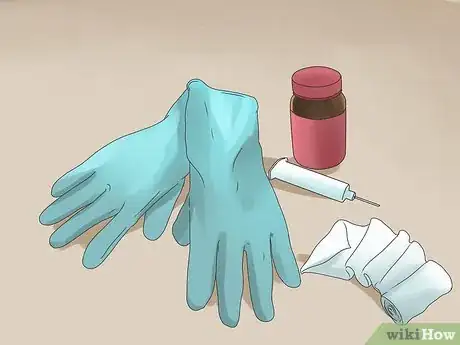
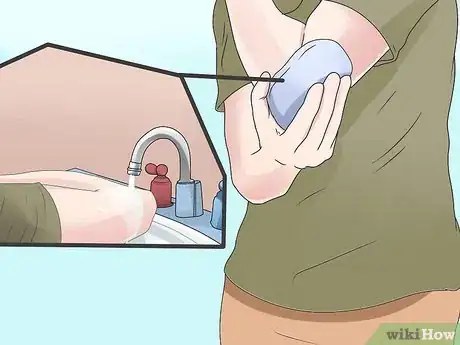
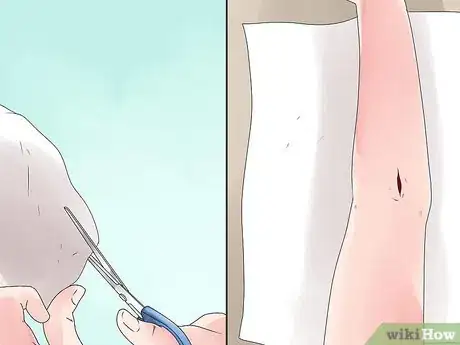

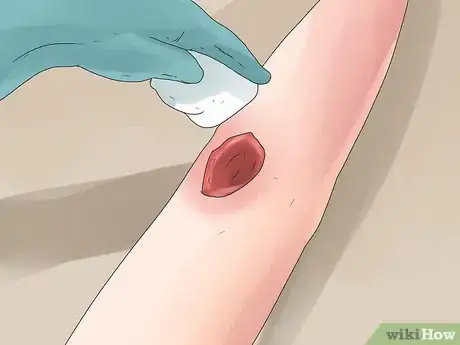
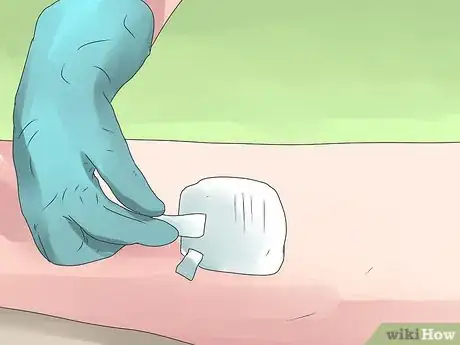
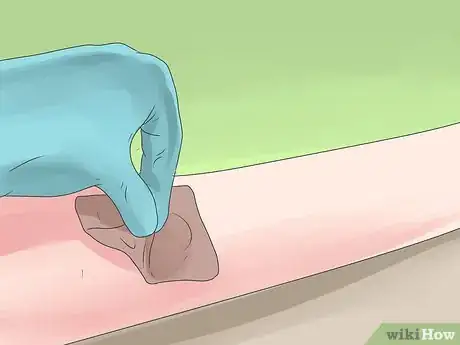
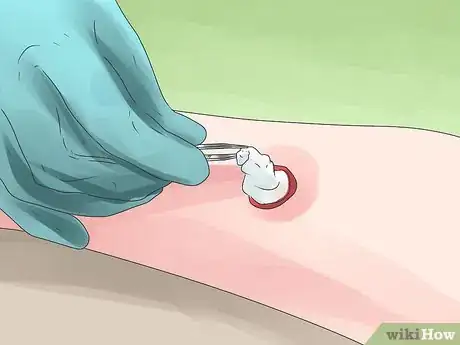
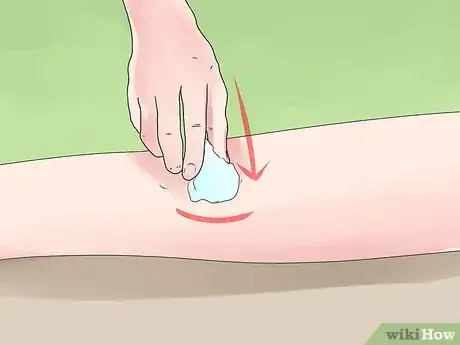
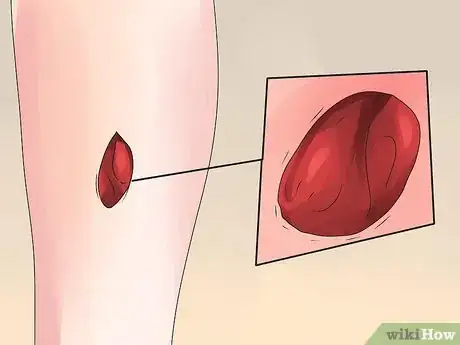
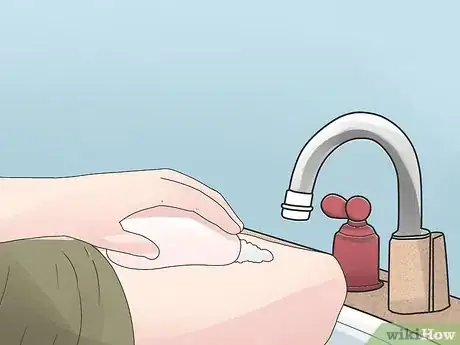
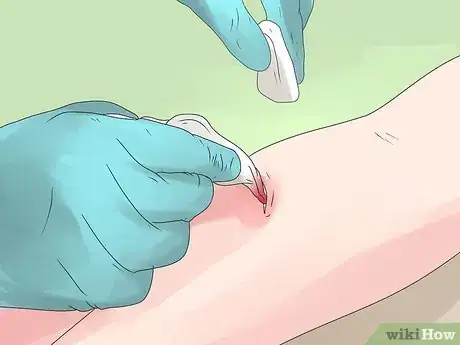
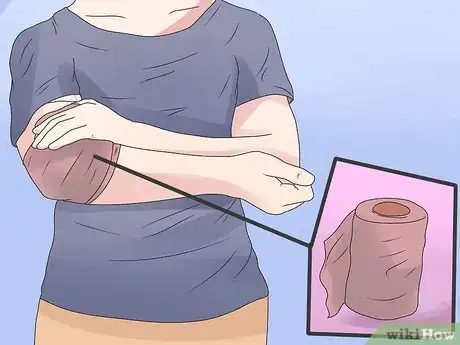

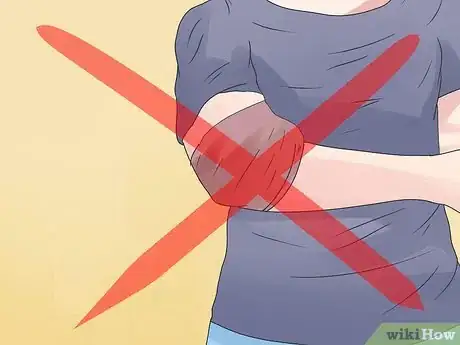

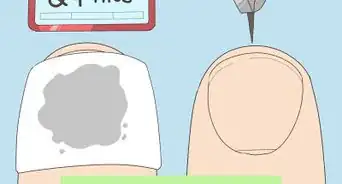
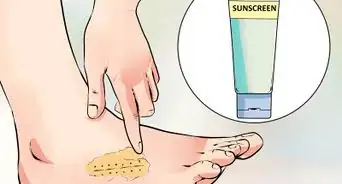

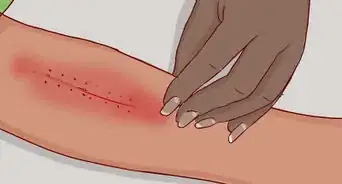



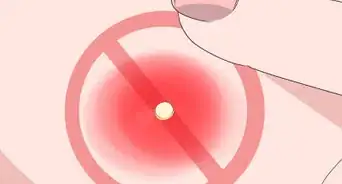
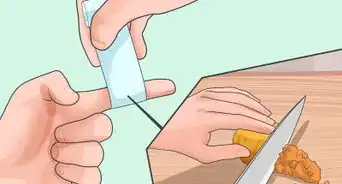
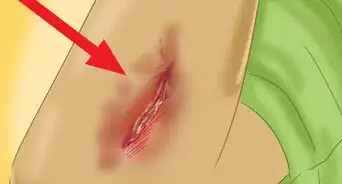











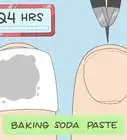
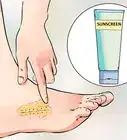

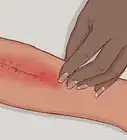




































Medical Disclaimer
The content of this article is not intended to be a substitute for professional medical advice, examination, diagnosis, or treatment. You should always contact your doctor or other qualified healthcare professional before starting, changing, or stopping any kind of health treatment.
Read More...